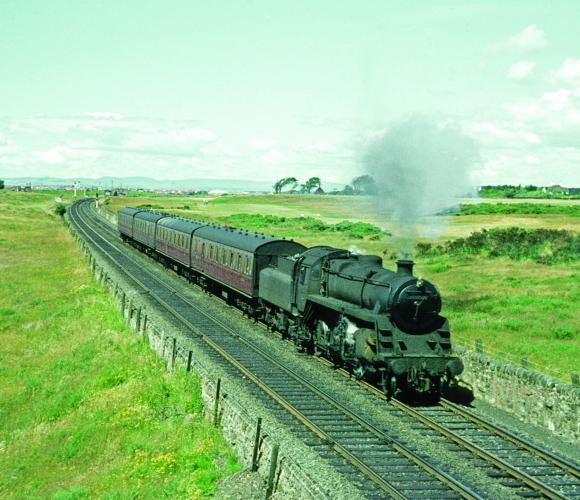October 2025
Fair Stood the Wind for France


You couldn't pass through a large station in the Fifties and Sixties without seeing a gaggle of school-uniformed boys (never girls) at the platform end scribbling down engine numbers.
Tens of thousands of boys spent all their spare time and pocket money in pursuit of elusive locomotives. today, the rather sneering description 'anorak' is frequently applied to trainspotters. And yes, we did wear anoraks and we usually carried duffel bags crammed with Tizer bottles and sandwiches.
For my fellow 'gricers' and me, our favourite spotting location wasn't at a station but by the busy West Coast Main Line just south of Warrington From our vantage point near the Twelve Arches bridge, we could see expresses hurtling down the incline from the viaduct over the Manchester Ship Canal. On the other side, meanwhile, shunting engines fussed about in the marshalling yards at Arpley and Walton. It was a trainspotters' paradise.
And the key to this paradise was a small but chunky book:the Ian Allan abc Combined Volume of British Railways Locomotives. In this we meticulously underlined our 'cops', compared them with our comrades and, like anglers, bemoaned the ones that got away'.
The craze survived the transition from steam to diesel and electric but most trains today are what is known as 'multiple units'- instead of being pulled by a locomotive, they are just a series of carriages with an engine underneath. Couples with security fears and health and safety laws, it's made trainspotting the preserve of a dedicated band of mainly adult enthusiasts.
Barry McLoughlin- Railway writer and former editor of Steam World Magazine
What do you think to this article? Do you agree with Barry?
Let us know what you think and share your experiences with us and others. Just follow us on Facebook, Twitter, Google+, Instagram and YouTube